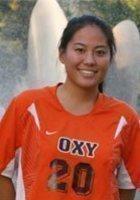Connect with hundreds of tutors like Starlie
Who needs tutoring?
FEATURED BY
TUTORS FROM
- YaleUniversity
- PrincetonUniversity
- StanfordUniversity
- CornellUniversity

Starlie
About Me
When I was a high school student, I thought math was a boring subject that required zero creativity and even less excitement. As I studied Physics as an undergraduate, I developed a deep appreciation for mathematics as a tool to model just about anything. I took a class called Math, Equity, and Access to Power and was inspired to become a mathematics teacher. After earning a Masters and Secondary Math Credential in California, I taught at an LAUSD school for four years. During those four years, I learned to discern when students were going to need support, what common misconceptions were, and how to best help students be successful depending on their personality and learning styles. My approach to working with your student is to help them develop an understanding of the mathematical topics they are learning in a holistic way. Your child will do more than simply practice problems, they will discuss and explain how the mathematics works. I implement strategies from Kagan and Equity and Access to help keep your child engaged and focused during a tutoring session. I believe every student has the potential to be successful in mathematics and I am excited to be a part of helping your child succeed.
Education & Certifications
Test Scores
Q&A with Starlie
Connect with a tutor like Starlie
Connect with a tutor like Starlie
Tutors with Similar Experience

Joseph
10+ YearsMoravian College and Moravian Theological Seminary
Bachelors, Political Science/Math
View Profile

